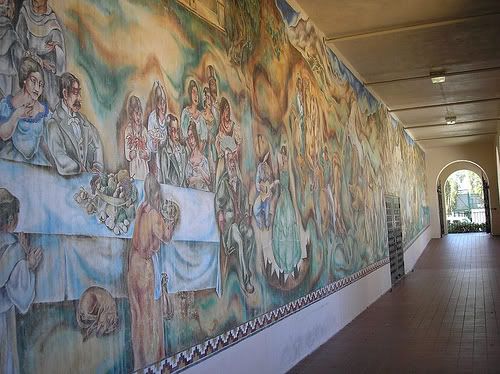During the Great Depression, president Roosevelt had an idea to help keep people working and keep the country moving forward, despite the economic hardships. He created the Works Progress Administration, which allowed people who couldn’t find jobs to work for the government, doing a variety of public projects: building dams and schools, improving roads, painting murals, writing, even recording music.
Fullerton benefitted from this. Many of the buildings at Fullerton College were built by the WPA.
This idea of government helping people, not by giving handouts, but by giving jobs that, in turn, helped the public, even extended to local government, including Fullerton. In Ostrich Eggs for Breakfast, Dora Mae Sim writes, “During the depression, Hillcrest Park was made larger and more beautiful. The work was done by Fullerton men who could not find jobs anywhere. The city of Fullerton paid the men a small amount of money each day. The men made better roads through the park. They built rock walls. They planted hundreds of trees and flowers.”
Given our current economic situation, maybe Fullerton would benefit from similar types of programs. I realize that such a change would require an overhaul of the way Fullerton currently does public projects. Under the current system, big pubic improvements fall under the jurisdiction of the Redevelopment Agency, a clunky and corrupt apparatus in which contractors who make campaign contributions to city council members get to do the public works, and get paid big bucks by the taxpayers.
This seems counter-productive and stupid. Why not give these jobs to out-of-work residents? We wouldn’t have to pay them a lot—maybe what they are currently getting from unemployment.
Imagine all the beautiful public projects Fullerton could do. I would gladly give up my unemployment if there was the option for me to serve my community instead—planting gardens, painting murals, writing, building stuff.
We could even put homeless people to work. They would get valuable work experience, and maybe more people would see them as a valuable part of the community.

The beautiful mural "Pastoral California" on the side of Plummer Auditorium was painted by WPA-commissioned artist Charles Kassler in 1934.
